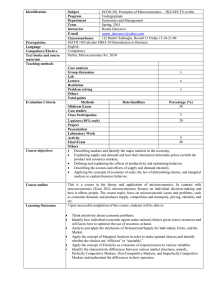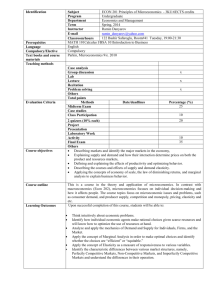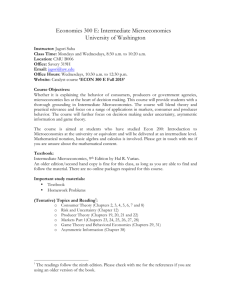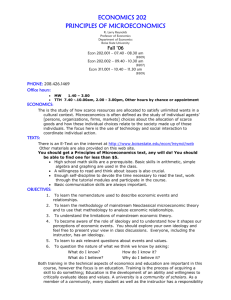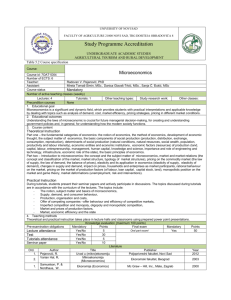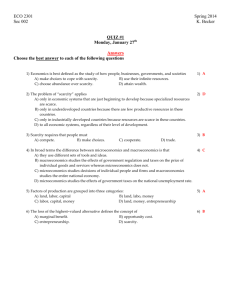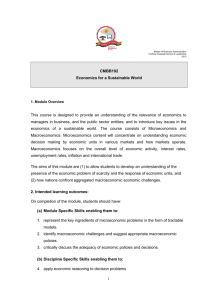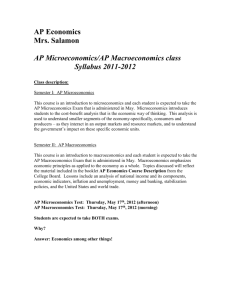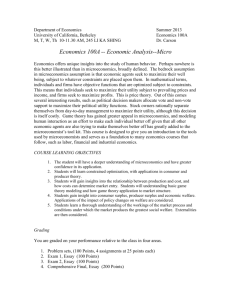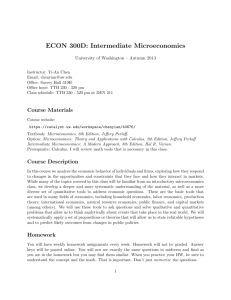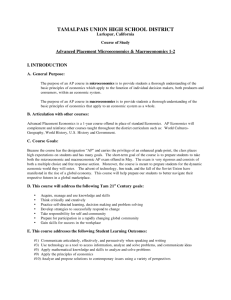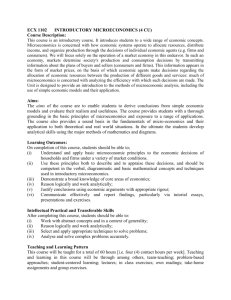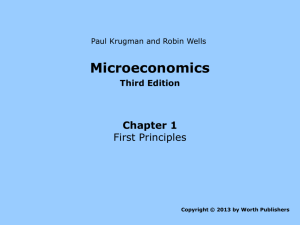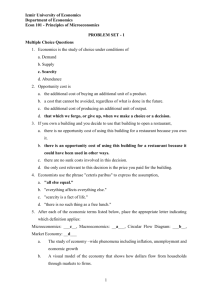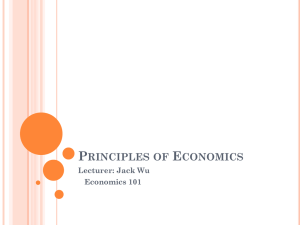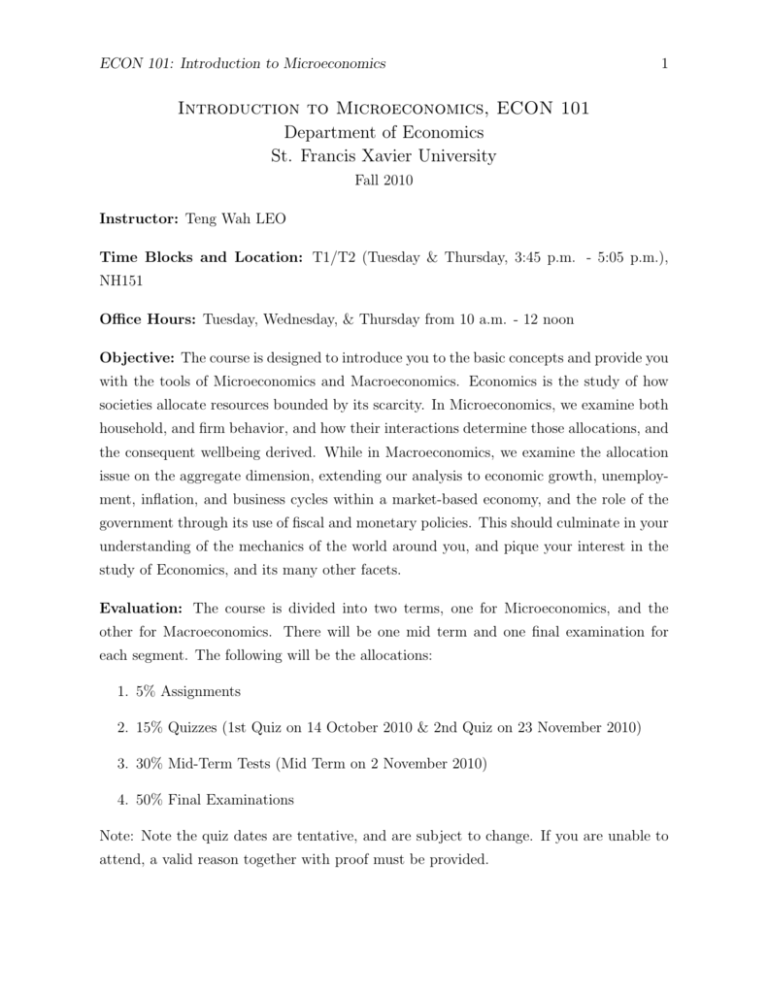
ECON 101: Introduction to Microeconomics
1
Introduction to Microeconomics, ECON 101
Department of Economics
St. Francis Xavier University
Fall 2010
Instructor: Teng Wah LEO
Time Blocks and Location: T1/T2 (Tuesday & Thursday, 3:45 p.m. - 5:05 p.m.),
NH151
Office Hours: Tuesday, Wednesday, & Thursday from 10 a.m. - 12 noon
Objective: The course is designed to introduce you to the basic concepts and provide you
with the tools of Microeconomics and Macroeconomics. Economics is the study of how
societies allocate resources bounded by its scarcity. In Microeconomics, we examine both
household, and firm behavior, and how their interactions determine those allocations, and
the consequent wellbeing derived. While in Macroeconomics, we examine the allocation
issue on the aggregate dimension, extending our analysis to economic growth, unemployment, inflation, and business cycles within a market-based economy, and the role of the
government through its use of fiscal and monetary policies. This should culminate in your
understanding of the mechanics of the world around you, and pique your interest in the
study of Economics, and its many other facets.
Evaluation: The course is divided into two terms, one for Microeconomics, and the
other for Macroeconomics. There will be one mid term and one final examination for
each segment. The following will be the allocations:
1. 5% Assignments
2. 15% Quizzes (1st Quiz on 14 October 2010 & 2nd Quiz on 23 November 2010)
3. 30% Mid-Term Tests (Mid Term on 2 November 2010)
4. 50% Final Examinations
Note: Note the quiz dates are tentative, and are subject to change. If you are unable to
attend, a valid reason together with proof must be provided.
ECON 101: Introduction to Microeconomics
2
Required Text:
Michael Parkin & Robin Bade, Economics: Canada in the Global Environment, 6th
edition, Pearson Addison-Wesley
Supplementary Reading:
Christopher Ragan & Richard Lipsey, Economics, 12th edition, Pearson Addison Wesley
Approach to the Course: You are strongly encouraged to follow the text and notes
closely, and advised to attempt all the questions in the text (and perhaps even the supplemental reading) particularly those with answers. You are free to ask me any question
regarding the questions and the classes during the office hours, and you are also free to
make an appointment to see me outside of those hours. It is beneficial to your experience
here if you can form into study groups, it would help you understand and consolidate the
subject matter taught. You are expected to think critically, and not merely memorize the
details by rote.
Course Outline: Introduction to Microeconomics
1. What is Economics?
(a) Definition of Economics
(b) Microeconomic and Macroeconomic Issues
(c) Economics as a Social Science
(d) Economic Way of Thinking
2. The Economic Problem
(a) Scarcity and Unlimited Wants
(b) Production Possibility Frontier
(c) Economic Growth
(d) Elements of Trade
(e) Market Economy
3. Demand and Supply
(a) Basic Theory
ECON 101: Introduction to Microeconomics
(b) Market Equilibrium
4. Elasticity
(a) Own and Cross Price Elasticity
(b) Income Elasticity
(c) Taxonomy of Goods
(d) Supply Elasticity
5. Efficiency and Equity
(a) Marginal Benefit and Cost
(b) Consumer and Producer Surplus
(c) Efficiency and Equity of Markets
6. Markets in Action
(a) Labor Market
(b) Marriage Market*
(c) Health Care Market*
7. Output and Costs
8. Perfect Competition
9. Monopoly
10. Monopolistic Competition and Oligopoly
11. Demand and Supply in Factor Markets
12. Public Goods and Taxes
(a) Private and Public Goods
(b) Market Failure and Government
(c) Taxes
13. Competition Policy
14. Externalities
3




